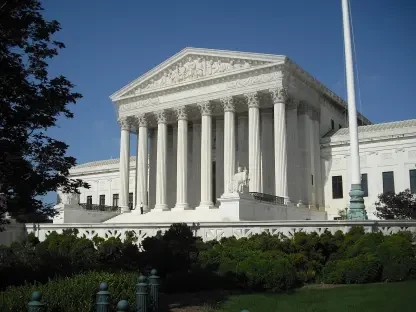In 2023, the U.S. faced a banking crisis, with the collapse of Silicon Valley Bank (SVB) and three other mid-sized banks capturing national attention. Although government interventions stabilized the initial turmoil, leading economists, including Viral V. Acharya and Raghuram Rajan, raised concerns that the measures might only provide temporary relief. These events have underscored the need for deeper financial reforms to mitigate the risk of future crises. As we delve into the root causes of the banks’ failures, it becomes clear that without substantial regulatory overhauls, the financial system remains vulnerable to similar shocks. The call to action is clear: without systemic changes, the fragility exposed by the 2023 banking crisis could signal more trouble ahead for the financial sector.
The Facade of Short-term Solutions
The interventions post-crisis were indeed necessary to prevent what could have potentially spiraled into a catastrophic economic disaster. However, Acharya and Rajan critically assess these swift actions as merely holding off the inevitable, highlighting that they may not hold up against the weight of systemic fragility which has now been exposed. A surge in uninsured demand deposits that came as a result of the Federal Reserve’s quantitative easing had burdened banks with a significant liquidity risk. This precarious situation was exacerbated as the economic value of long-term assets held by banks plummeted once interest rates began to climb and the Fed’s monetary policy tightened.These circumstances unveiled an unsettling truth: the so-called conservatism regarding the liquidity of smaller banks was a facade. A shift towards long-term securities and commercial real estate loans, in anticipation of continual low-interest rates, put these banks at heightened risk. As the Federal Reserve pivoted to tightening, depositors, driven by anxiety and waning confidence, initiated a worrying outflow of funds. The stability of the banking sector, held together by a thread of supposed liquidity, was brought into question.
Analyzing the Core of the Crisis
Delving deeper into the core of the crisis, the authors point to the systemic risks that had accumulated over time, risks that had been overlooked as long as economic conditions remained favorable. The altered asset compositions of smaller banks made them extremely vulnerable to shifts in monetary policy. With an increased stake in long-term securities and a surge in commercial real estate lending, these smaller banks were not fortified against the double-edged sword of rising interest rates and an economic downturn.As fear permeated the market, what initially started as a careful examination of bank balance sheets soon devolved into a frayed loss of confidence among depositors. The threat of contagious bank runs loomed over an industry teetering on the brink of instability. This was the flaw in the system laid bare—a flaw that had been itching to surface in a financial landscape markedly altered by years of loose monetary policy.
The Immediate Response and Its Ramifications
In response to the burgeoning crisis, the Treasury implemented guarantees for uninsured depositors, paving the way for a new Fed lending facility and additional support from the Federal Home Loan Banks. While this triage stemmed the immediate bleeding, it introduced a new set of chronic conditions that could erode the banking system’s health over time. Acharya and Rajan contend that these measures fostered an environment where banks could defer acknowledging their losses, prolonging the pain and potentially creating a dependency on government bailouts.Furthermore, the intervention effectively diluted the meaning of market discipline, carving out a picture where the risk-takers were shielded from the full brunt of their economic choices. As a result, the foundational capitalist principle that risk should equate to potential loss was compromised. This practice of safeguarding banks hints at a ‘too many to fail’ doctrine emerging, as broad intervention becomes the go-to solution when a significant number of institutions concurrently engage in high-risk maneuvers.
The Ongoing Lag in the Banking Sector
The indicators that suggest the US banking sector is braving a continuing storm are ever-present, one year on from the initial crisis. The KBW Nasdaq Bank Index and other relevant metrics underscore that smaller banks, along with their clientele, particularly small and medium-sized enterprises, are still navigating choppy waters. Acharya and Rajan bring to light the persistence of this malaise rippling through the banking sector, a bleak reminder that the veil of stability provided by the intervention is tenuous at best.The fact is, the traditional relationship between small banks and local businesses is inseparable from the economic fabric of local communities. With these key financial conduits still suffering, the fallout of the crisis is keenly felt at the most foundational levels of the economy, impacting growth, innovation, and the health of the job market in areas already struggling to rebound.
Reassessing Financial Infrastructure and Policy
Such a monumental crisis warrants a reassessment of the larger financial infrastructure on which the US economy rests, as well as a reevaluation of the policies that govern it. Acharya and Rajan call for a deep dive into the stimulus measures enacted during the pandemic and their long-term effects on the banking sector. Further, the scrutiny of banking activities—specifically those that have been allowed to fall through regulatory cracks—becomes paramount.This period of reflection also extends to the Federal Home Loan Banks’ role in the banking ecosystem, questioning whether their assistance might be postponing the necessary capital-raising efforts by the banks. Plus, there’s an urgent need to comprehend how market discipline has been reshaped in the aftermath of these events, for it’s evident that the lack of punitive outcomes for risky behavior might embolden future carelessness.
Moving Beyond Temporary Fixes
The long-term financial health of a nation goes beyond putting out fires as they emerge. Acharya and Rajan’s analysis stresses the critical need for a vigilant and ongoing discourse that dissects the deeper issues brought to light by the 2023 banking crisis. They argue that the time is ripe for an earnest investigation into the causes behind the tumult and for reforms that will rebuild and fortify the banking industry and its regulatory frameworks.To view the banking crisis as a transient hiccup in the history of financial markets would be a grave mistake. Instead, it should serve as a potent catalyst for a lasting and meaningful overhaul of financial policies and systems—a reform that genuinely addresses the vulnerabilities of the modern banking landscape and safeguards the economy against future crises.









